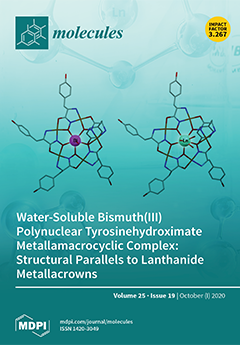Bacterial outbreaks caused by
Staphylococcus aureus (
S. aureus) are interesting due to the existence of multidrug resistant (MDR) isolates. Therefore, there is a need to develop novel ways to control such MDR
S. aureus. In this study, some natural agents such as honey bee (HB), extracts of either
Moringa oleifera seeds (MSE), or leaves (MLE) and essential oils of garlic, clove, and moringa were studied for their inhibitory activity against this
S. aureus pathogen. About 100 food samples including beef luncheon (
n = 25), potato chips (
n = 50), and corn flakes (
n = 25) were investigated for possible pollution with the
S. aureus bacteria. The isolated bacteria suspected to belong
S. aureus that grew well onto Baird–Parker agar (Oxoid) and shiny halo zones and positive coagulase reaction were selected and identified by API-Kits; all of them that were approved belong to
S. aureus (18 strains). The sensitivity of the obtained 18
S. aureus bacterial strains to 12 antibiotics were evaluated; all of them were resistant to ofloxacin; however, other antibiotics tested showed variable results. Interestingly, the
S. aureus No. B3 isolated from beef luncheon was resistant to 10 antibiotics out of 12 ones tested. Multiple antibiotic resistance index (MAR) of this
S. aureus strain was about 83.3%. Therefore, its identification was confirmed by sequencing of a 16S rRNA gene which approved a successful biochemical identification carried out by API Kits and such strain was designated
S. aureus LC 554891. The genome of such strain appeared to contain
mecA gene encoding methicillin resistance; it was found to contain
hla, hlb, tsst-1, and
finbA that encode α-blood hemolysis, β-blood hemolysis, toxic shock syndrome gene, and fibrinogen-binding protein gene, respectively. In addition, the virulence factors viz.
sea; seb; sec encoding enterotoxins were detected in the DNA extracted from
S. aureus B3 strain. Aqueous extract of
Moringa oleifera seeds (MSE) showed inhibitory activity against
S. aureus LC 554891 better than that obtained by tetracycline, essential oils or HB. Minimum inhibitory concentration (MIC) of MSE was 20µg/mL. Instrumental analysis of MSE showed 14 bioactive chemical compounds. Combinations of both MSE and tetracycline showed distinctive inhibitory activity against
S. aureus LC 554891 than that obtained by either tetracycline or MSE singly.
Full article






